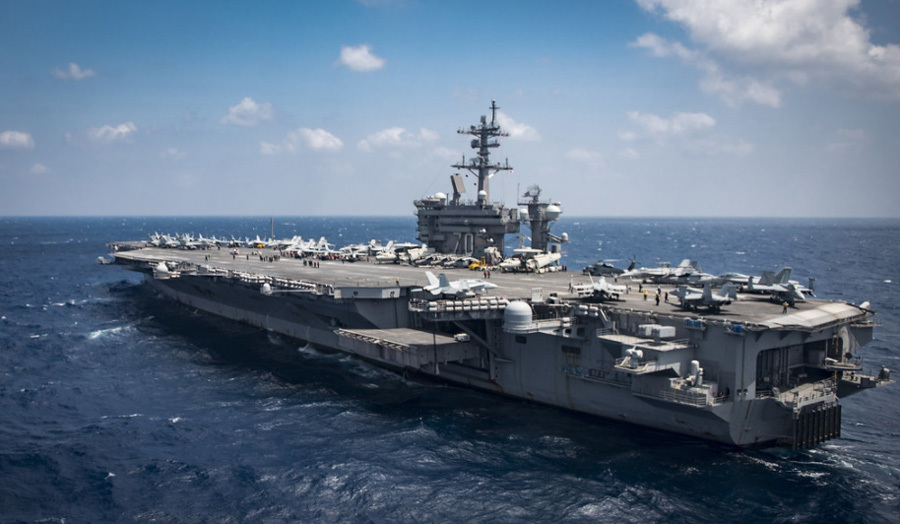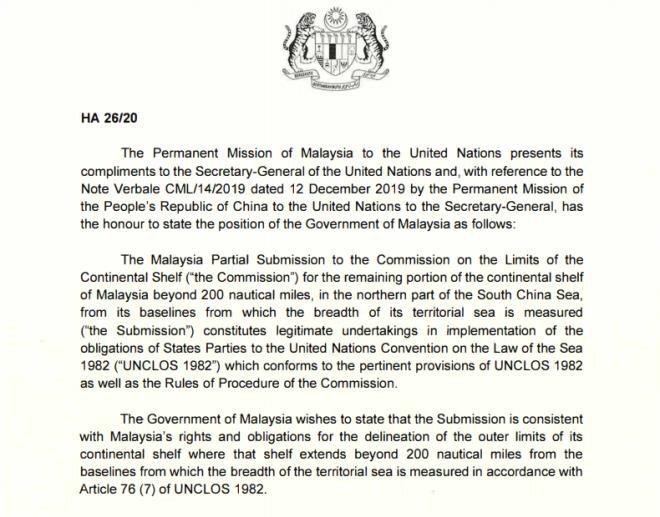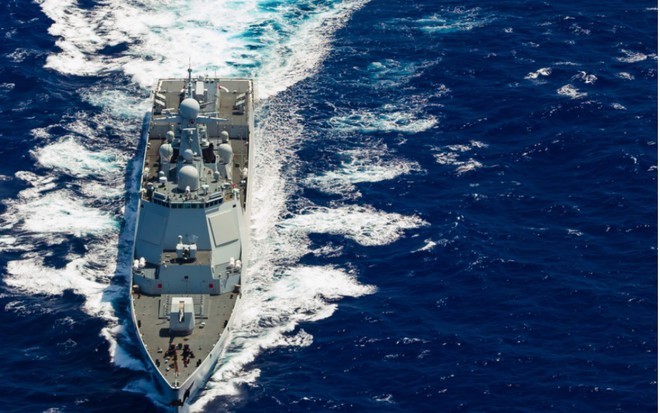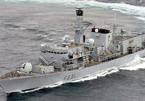The world is witnessing fierce competition between the US and China. In recent days, exercises and deployment of aircraft carriers of both sides have raised concerns over a potential military conflict.
 |
|
An American aircraft carrier in the East Sea. Photo: US Navy
|
The East Sea (internationally known as the South China Sea) is a key point in the two countries' strategy to gain dominance in the region. It appears that the current US approach in the East Sea is to respond to China's more assertive actions by leveraging its own greater power.
Defense Secretary Mark Esper said the US is actively building up capabilities necessary to prevent China from engaging in a major confrontation.
Stuck between two powers
Facing US-China tensions, ASEAN countries are stuck between two great powers. On one side, China is strong and aggressive and very near. On the other side, the US supports Southeast Asian countries’ stance over the East Sea, but its policy is fickle.
In this situation, the Singaporean Prime Minister said: "ASEAN does not want to choose any side." This is the opinion of Singapore but also of most other ASEAN countries. However, some ASEAN countries have taken advantage of the opportunity to express their legal views.
 |
|
The Malaysian delegation to the UN sent note denying China's East Sea claims.
|
Malaysia, which always chose "silent diplomacy" in the past, took the first act. In late 2019, Malaysia submitted its extended continental shelf submission. China immediately rejected Malaysia's claim to the expanded continental shelf and asserted its sovereignty and rights in the East Sea with very vague and ambiguous arguments.
After that, some ASEAN countries sent notes to the UN to show their attitude. The first was the Philippines, then Vietnam, Indonesia and finally Malaysia. The common point in these statements is to oppose claims that violate the United Nations Convention on the Law of the Sea (UNCLOS) and international law of China; and at the same time invoking the Permanent Court of Arbitration’s ruling 2016 in different degrees.
The influence of the East Sea dispute has spread beyond Southeast Asian countries. The US, Australia and more recently the UK have also released official statements.
All of these statements are in harmony with the stance of ASEAN countries in opposing China's unreasonable maritime claims and invoking and respecting the PCA 2016 ruling in various degrees.
China appeases ASEAN
Under the "attack" of the US, along with the "protest" of the ASEAN countries directly related to the East Sea dispute, there is "harmony" from other allies of the US. China, shows mildness with the US in their statements. They do not descend the ladder in "tit-for-tat" actions with the US.
China also actively calms ASEAN countries. In a recent remark, Chinese Foreign Minister Wang Yi reiterated that he agreed to restore the negotiation process with Southeast Asian countries on the COC. This move was made by China after months of relentless push to assert itself as the most powerful militarized power in the East Sea.
In August 2018, when the draft COC was released, Chinese Foreign Minister Wang Yi unilaterally announced that this process would be completed in three years. Given the facts, however, observers wonder how the COC can be completed within that deadline.
Will COC be completed soon?
Foreign Minister of the Philippines - the country coordinating ASEAN - China relations this year, said that talks on the COC would resume this November. However, observers doubt it. An expert from Singapore said that "it is just a resumption of negotiations, not a negotiation".
In general, ASEAN countries want to restrain China's behavior, and China does not want to be restrained.
Technically, there is currently the "Draft joint negotiation", but the parties are still unable to agree on the same issues in the past. For example, there is no indication that the parties agree on the scope of application of the COC.
Formal discussions have not even begun to go into details such as fisheries management, joint oil and gas exploitation, environmental protection, or law enforcement in disputed waters.
How will countries deal with China's claim to historic rights by domestic law and what will the role of international law be in this case? And how will disagreements over the interpretation of the COC be resolved?
Is the COC "legally binding" as desired by some ASEAN countries? And what does "legally binding" really mean?
There are also a number of other problems. Therefore, the COC process is still not likely to end any time soon.
Another difficulty for ASEAN is that China always wants to exclude the US and other countries from the COC negotiation process, and this is a challenge that requires ASEAN to find ways to solve in the future if it wants the document to really make sense.
 |
|
Chinese destroyers practice in the East Sea. Photo: Chinamil
|
Invoking the PCA ruling
Another challenge in negotiating the COC is invoking and complying with the PCA ruling 2016. According to this decision, the so-called "9 dash line" has no legal grounds nor any land features in Truong Sa Archipelago (Spratly Islands) that are considered an island, which are eligible to establish EEZs and continental shelf around them. So the scope of disputed areas and overlapping claims in the East Sea has been considerably narrowed.
Compliance with the ruling will reinforce the parties' commitment to UNCLOS, an international law document that has been repeatedly emphasized in the COC negotiation process.
Moreover, this ruling will inevitably make the COC more credible, both to stakeholders and the international community.
As the Filipino President said at the recent 75th meeting of the UN General Assembly: The verdict is now part of international law, overcoming all agreements and approaches aiming to fade, reduce or waiver (the PCA ruling) of the provisional governments.
Therefore, if the COC does not mention this ruling, it is likely that COC participants will not be able to prevent infringements of the EEZ, or the intimidation of war ships and coast patrol boats against vessels or oil drilling activities in the areas under the sovereignty of the coastal countries, which are recognized and protected by UNCLOS.
If the PCA ruling is respected, these issues can be resolved easily.
For that reason, issues to be raised will include the requirements for COC to include content complying with UNCLOS and international law, and application of the provisions of the PCA ruling, with legal and substantive obligations.
Considering the signs from China, they will not accept this content. Therefore, the COC negotiation process will still be very bumpy.
ASEAN, as a united bloc, should wisely consider realism, and avoid falling into the lead of China or any other major power. It is good that both ASEAN and China are moving towards the COC. However, a bad COC, not a failed COC negotiation, will put ASEAN at greater risk.
Viet Hoang (Lecturer at Ho Chi Minh City University of Law, a member of the Marine and Island Law Research Committee)

Vietnam wants resumption of talks on East Sea code
Vietnam wants code of conduct (COC) negotiations for parties in the East Sea between Southeast Asian nations and China to resume soon, after months of disruption caused by the COVID-19 pandemic, a spokesperson has said.

China reacts to France, UK and Germany’s note verbales on East Sea
China is still looking for new arguments to refute the Permanent Court of Arbitration (PCA)’s ruling in 2016. The legal battle in the East Sea is not over yet.